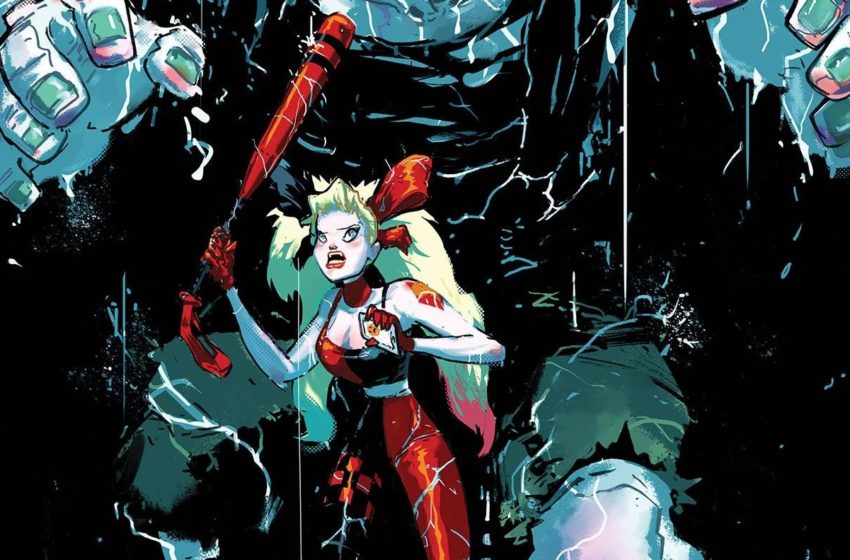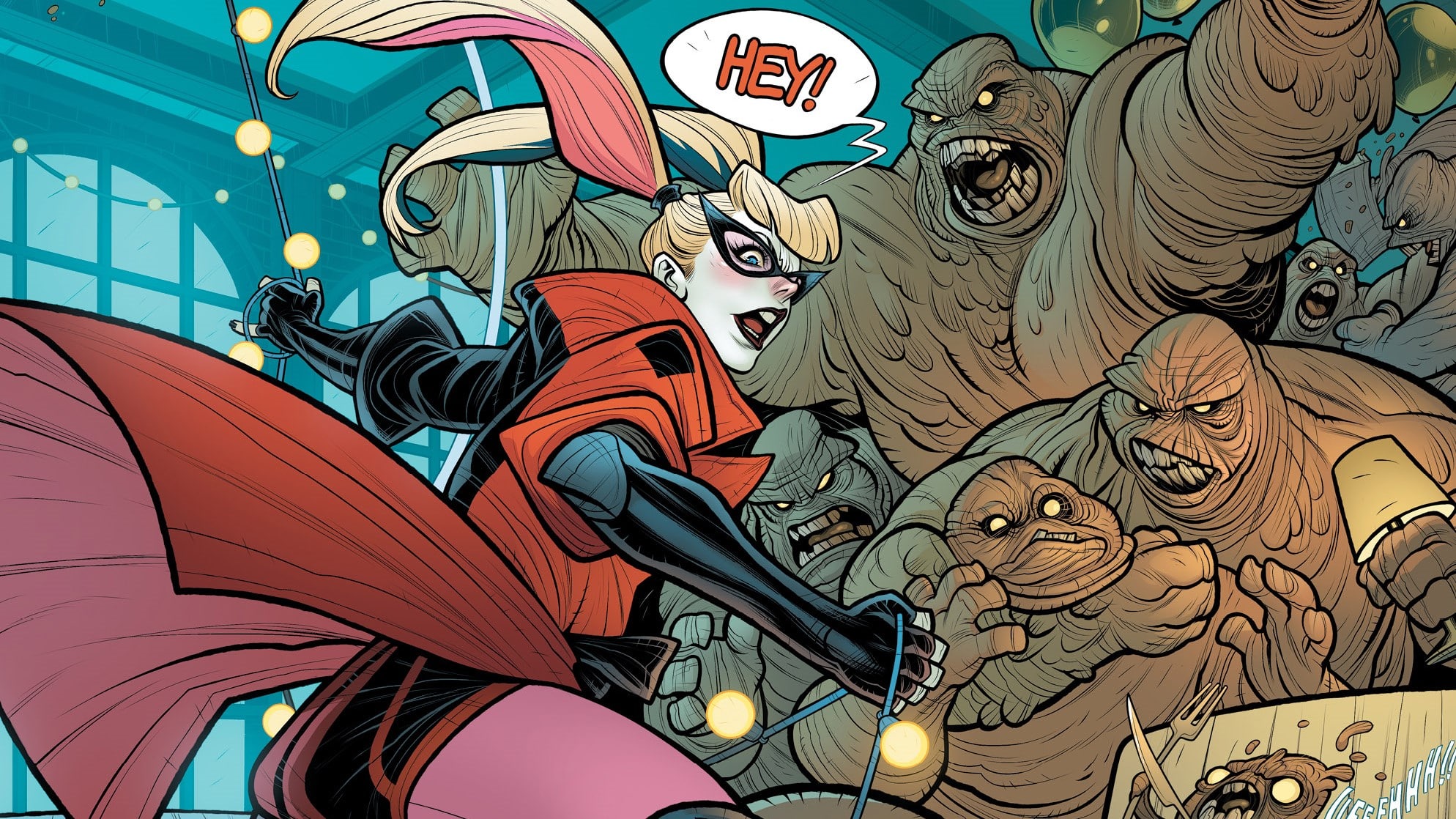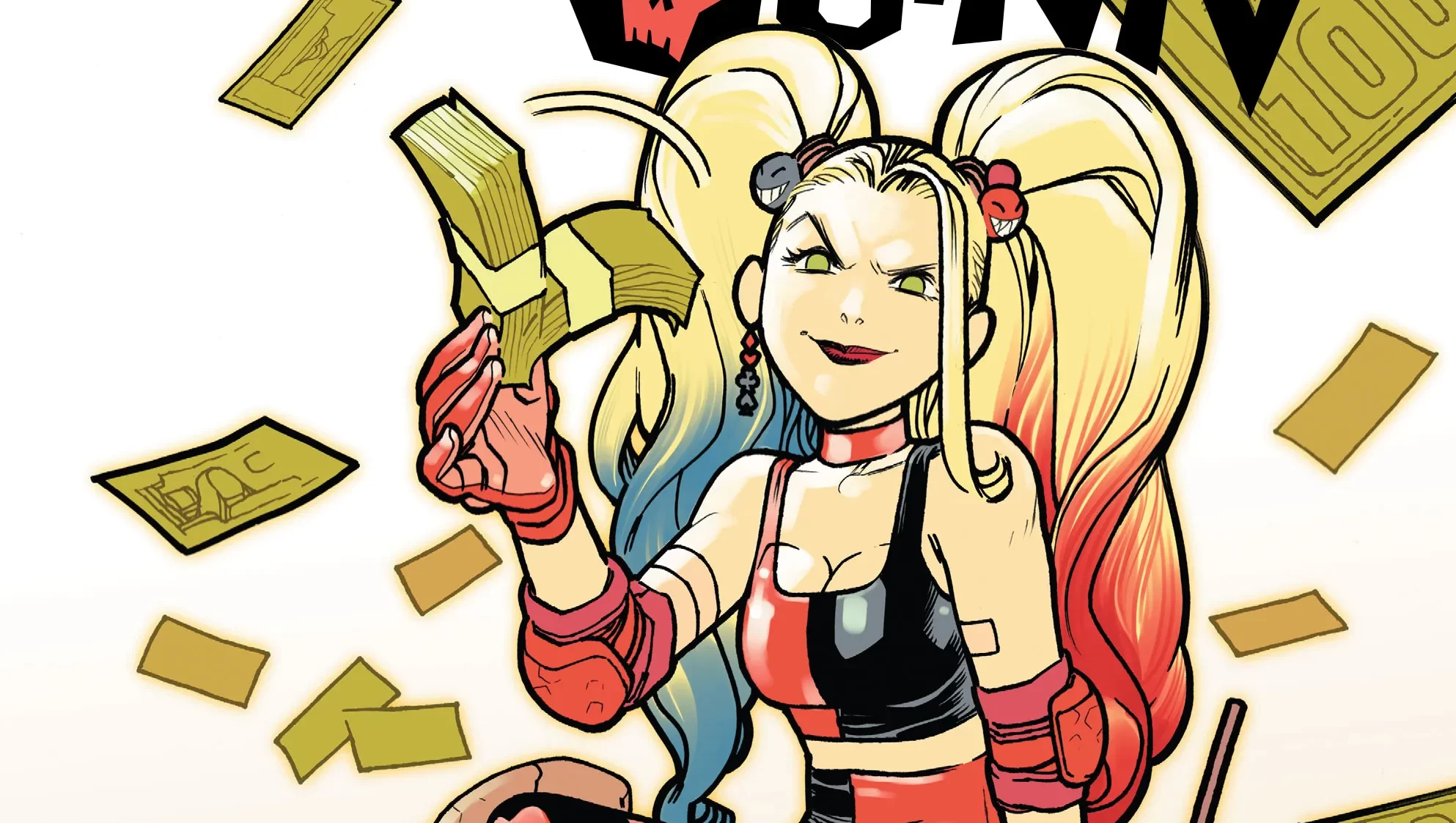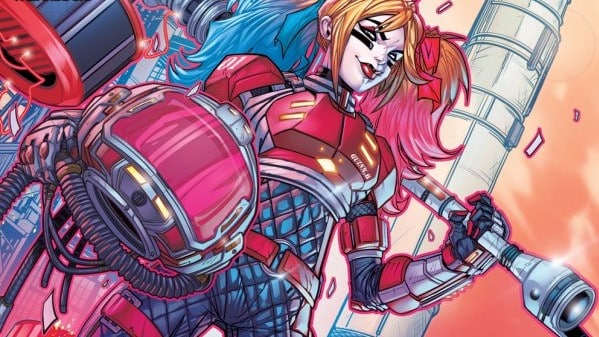Harley Quinn’s attempts at rehabilitating Gotham’s former clown gang members have hit a rather serious snag. Everyone in her support group has been apprehended by the villainous but State-approved Hugo Strange. What’s it going to take for Harley to pick herself up and dive right back into the fight? Harley Quinn #4 is written by Stephanie Phillips, drawn by Riley Rossmo, colored by Ivan Plascencia, and lettered by AndWorld Design.
Check-mates
I like Harley. She’s inherently likeable. Of course she is, that’s a big reason why she’s grown from being the Joker’s moll to having her own series, a major spotlight in the DCU films, and the reason why you’re here, reading my review (thank you for that, by the way!)
What’s fun about that is it makes her get along with people on both sides of the superhero-supervillain line. It’s especially true now, as the current run’s made the full leap to anti-hero. She has tentative allies in the Batfamily, and friends in Gotham’s underground. She’s possibly one of the most liked people of both sides of the costumed community – who else can claim that?
Despite the mischief she causes, and despite the bad she’s done, she cares about the people around her. She sees the best in them – and while she’s taken that MUCH too far in the past with her love for the Joker, she seems to be one of the few people who can make the villains of Gotham seem more than just a villainous hatred for the Batman.
Though the cliffhanger, the cover for this issue, heck, even the opening page led us to believe that poor Harley’s going to be attacked by Solomon Grundy, a page turn reveals that they’re actually getting along quite well, in a friendly game of what I can only imagine is very loosely-ruled chess.
One might not think of Solomon Grundy as the best conversationalist, but Harley seems to know just how to appeal to him. When he speaks at all, it’s in broken phrases, pieces of his trademark rhyme, or even just singular words – but without even trying, it looks like Harley’s able to see past his broken language and right into what he means.
A less generous read might see this scene as Harley being so self-absorbed in her own problems that she’s really just self-reflecting regardless of what Grundy has to say, but I think that disregards Harley’s greatest strength. It’s not that she’s a great fighter, a chaotic thinker, or even that she’s a psychologist – Harley’s biggest boon and bane is her compassion. Making people feel seen, and heard, is a gift.
A Nightmare in 16 Parts
Of course, being able to break people free of captivity and save them from the clutches of an evil madman is also a gift, and one that Kevin doubtless feels a more pressing need for. He and the rest of Gotham’s captured clowns are being kept in yellow-tinted glass cages that are both extremely stylish and a surreal nightmare – the latter part enhanced by the splashes of red on these cages from those literally banging their head against the wall. Kevin’s conversation with Hugo Strange does not go nearly as well as Harley’s.
Hugo Strange is a man who’s been quickly forgiven for his past crimes and being immediately put into a position that allows him to continue the kinds of abuses he’s widely known for (something that hits home a little harder than usual this week) – but hypocritically, redemption isn’t something he actually believes in. He doesn’t want to save people – he wants to break them. He tries to break Kevin. Rossmo and Plascencia get to go all out on a guided tour through a nightmarish drug trip through Kevin’s subconsciousness, and I’m sorry, Kevin, but sometimes fictional characters have to suffer to bring about gloriously warped and sinister pages like this.
Outlandishly warped lines are a part of Rossmo’s style even in his most stable panels. Here, he gets to go all out, and every bit of it feels just as wrong as it’s meant to. Neon colors, garish grins, numbered panels marking a descent into madness – it’s overwhelming, chilling, and it’s hard to imagine that it’s something Kevin can hold his own against for long.
“…So Clearly Not Batman”
Fortunately, Harley’s on her way. She’s armed with her trusty bat, renewed confidence in herself, and the realization that she’s never going to be able to be the kind of heroes the Batfamily are. She’s Harley Quinn, and she’s going to do things her way. There’s an instantly-classic dig at Batman’s gruff voice, where you really see how friendly Harley’s inner-monologue lettering is as compared to what you’d need for a more serious character. A near-death stumble she quickly recovers from, and she’s off, swinging her way up a building of Strange’s bow-tied henchmen.
Harley swinging into action feels like another moment the art team’s just been waiting for to unleash their full creative talent. The panels dance, they’re so alive on the page, refusing to conform to standard panel grids, their vibrancy trying to break the action right out of the comic itself. Harley’s wild, silly, acrobatic fighting style is a thing of beauty here. Plascencia’s colors are just solid enough to ground all this chaos in deeper mood, be that joy, danger, triumph or the sinsiterness of a threat.
Harley Quinn is, in some ways, an unfamiliar look at the character, but the series completely nails the best of what makes this character work. Every member of the creative team is bringing something different and unique to the table, and with every issue, it’s starting to blend together in fantastic ways.
Armaan is obsessed with the way stories are told. From video games to theater, TTRPGs to comics, he has written for, and about, them all. He will not stop, actually; believe us, we've tried.






